So far in this series we have tackled artistic renderings of Coel Hen (a late-Roman warlord)1, Arthwys ap Mar (Coel’s great-grandson) a Romano-British Warlord/King2, Peredur ab Eliffer a Brythonic Warlord (Arthwys’ grandson)3, Eugein ap Beli of Alt Clut a 7th century Brythonic King, Domnall Brecc a 7th century King of Dal Riata4. Today we look at Niall Noígíallach, a 5th century supposed High-King of Ireland, famous for the ‘Nine Hostages’ of his epithet, Noígíallach. The various Annals of Ireland all place his death around 400, though a floruit in the mid 5th century is much more likely, as the exploits of his sons seem to span three generations, a impossibly long period for one mans sons even if he were to have sons at the beginning and end of his floruit. Rearward dynastic expansion is a common thing, seen within the pedigrees of Wessex, with repeated formulae used to stretch a reigning dynasty back as far as possibly to enhance legitimacy.
The notion of Niall as High-King of all Ireland are likely manufactured much as the notion of Arthur as High-King of all Britain. As I have discussed in many of my articles on Arthur, pan-island High-Kings are extremely improbably, though we do know that regional High-Kings or Over-Kings were a fairly common occurrence. It may stand that Niall was High-King of Connacht. Interestingly tradition holds that Niall’s mother Cairenn was a Saxon princess, though her name hints at a Romano-British origin with the Latin name Carina.
Niall is famed for his raiding, and is attached at the abductor of St. Patrick in such a raid. This would make him a rough contemporary of Ceredig of Alt Clut, as well as Coel Hen (late in his reign), and Ceneu ap Coel (early in his Reign.) The raid that took Patrick was very well likely on Coel’s own territory, and the impetus behind Coel’s late wars against the Irish and Picts, ultimately leading to his death ~440. Working backward from his descendant Forggus mac Muirchertaig, Niall’s birth can be fairly reliably be placed around 400-420, making him a younger contemporary of Coel Hen of Northern Britain. Patrick as mentioned earlier was captured and enslaved by Niall, and then was opposed to Niall’s son Lóegaire, and in some sources Lóegaire’s son Lugaid. With the later death of Patrick given in the annals it is very possible that a young Patrick was captured by Niall, grew up to oppose his son Lóegaire (who may be the father of Arthwys ap Mar’s wife Cywair who was traditionally considered the daughter of the Irish High-King at the time), and then in his old age opposed Lugaid. There are too many nuances to get into the chronology of St. Patrick, as well as the issues surrounded if there was one Patrick or two etc. but this is one probable scenario.
I have chosen to depict Niall in a Léine, a long calf to ankle-length tunic popular amongst the Irish and early Scots. His tunic is girded around his legs to allow for enhanced mobility whilst aboard a ship or fighting. He carries a belt knife as a general purpose everyday tool and if necessary weapon. He wears a simple leather belt, and a plaid cloak with a silver penannular brooch. He wears simple boots of leather tied at the top.
His war-gear is not dissimilar to what would be seen in Britain. A helmet of late-Roman style taken in a raid, as well as a maille shirt likely taken the same way. Mineral resources were scarce in Ireland, and such accoutrement would have been especially high-status and precious. The description of Cú Chulainn’s helmet from the Táin echoes the later memories of richly decorated ridge-helmets.
On his head he put his crested helmet of battle which was adorned with forty carbuncle-gems, studded with red enamel and crystal and carbuncle and brilliant stones reaching past the middle of his shoulders from the eastern world
His sword is a simple late-roman spatha, with an organic hilt, though he may have carried a shorter sword of local make which seemed to retain popularity for a few hundred years after the La Tene period, when the longer La Tene swords fell out of favor in Ireland. He would no doubt have been armed with a spear, a shield and likely javelins as well, though I have chosen not to picture those here.



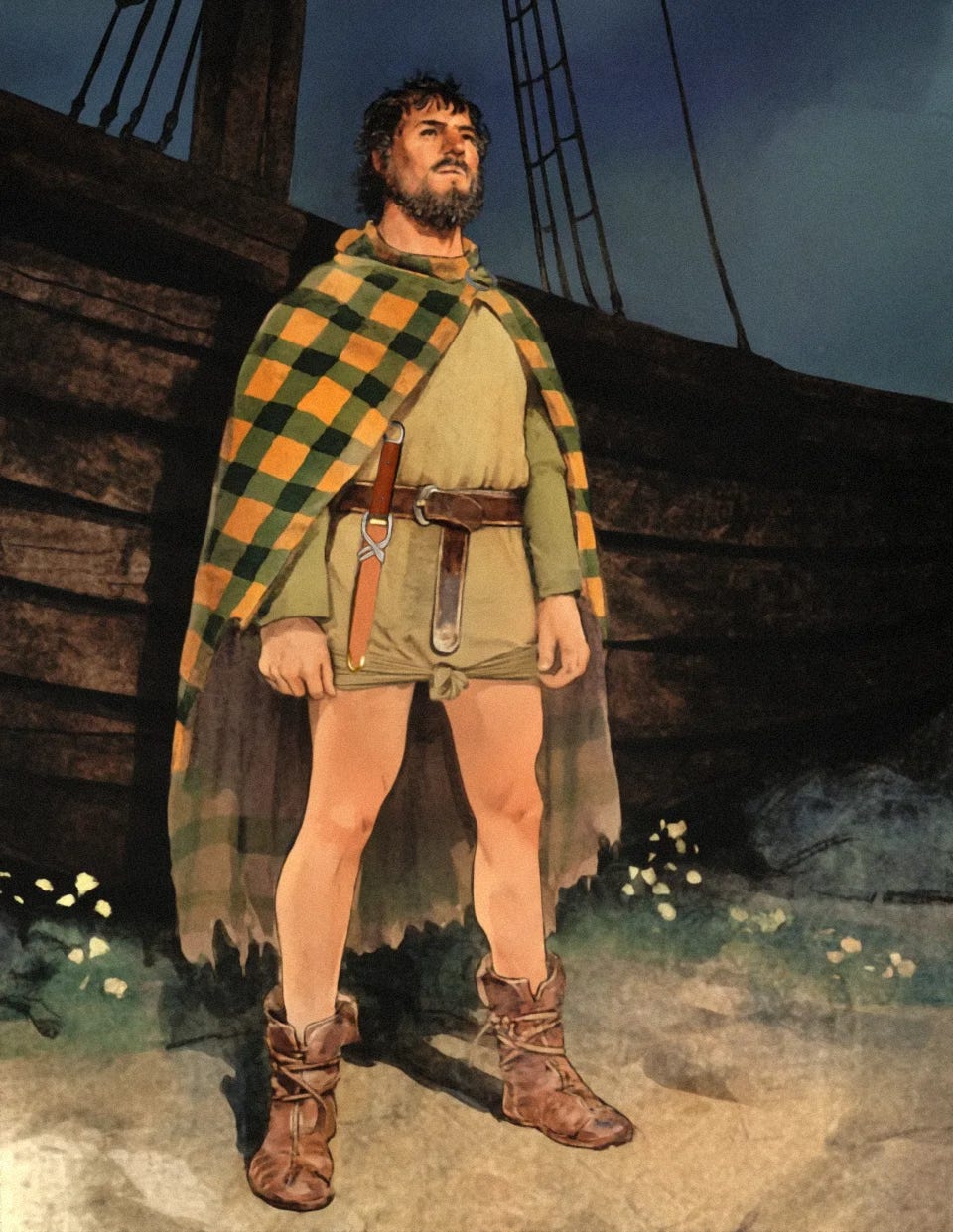
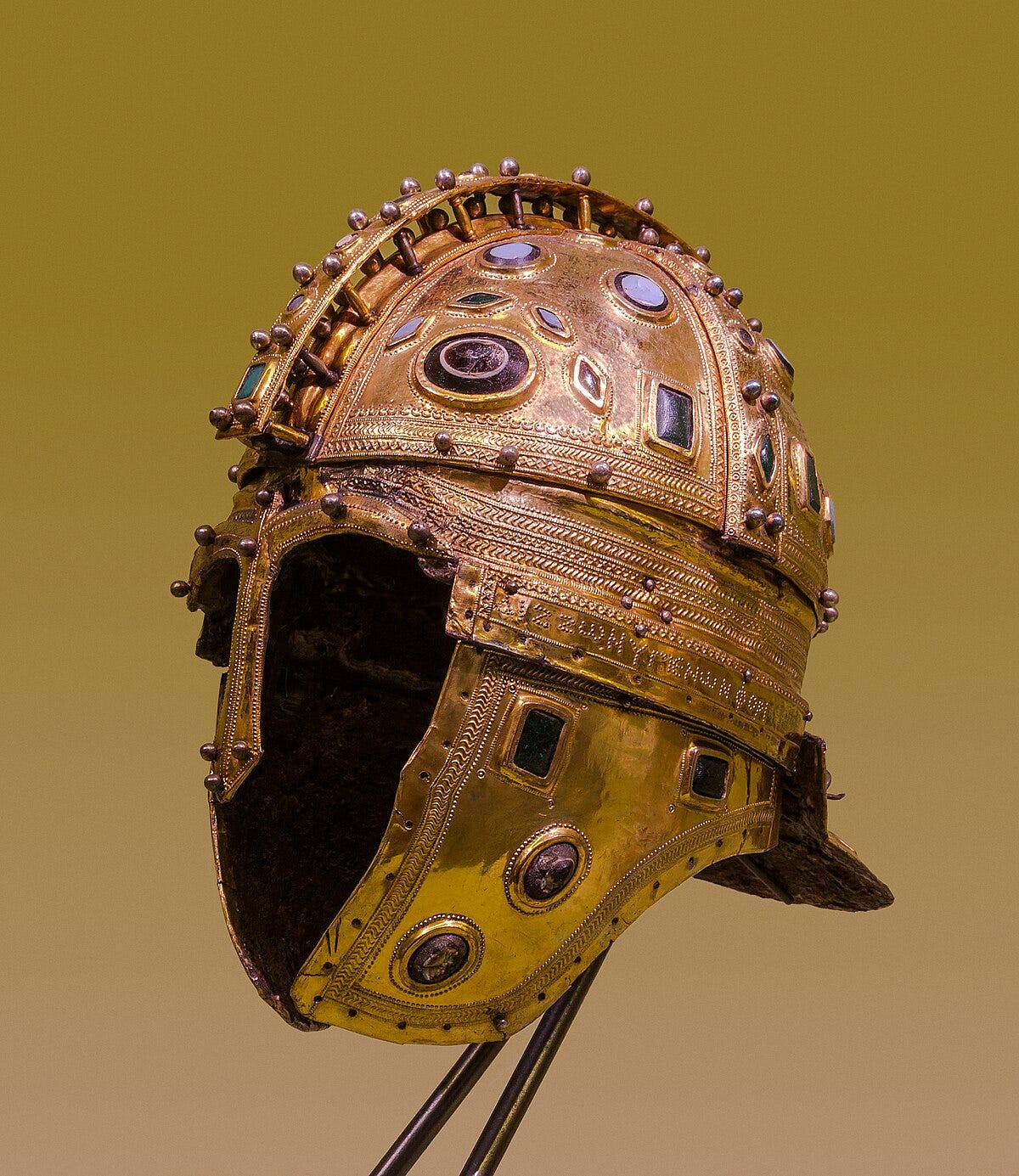
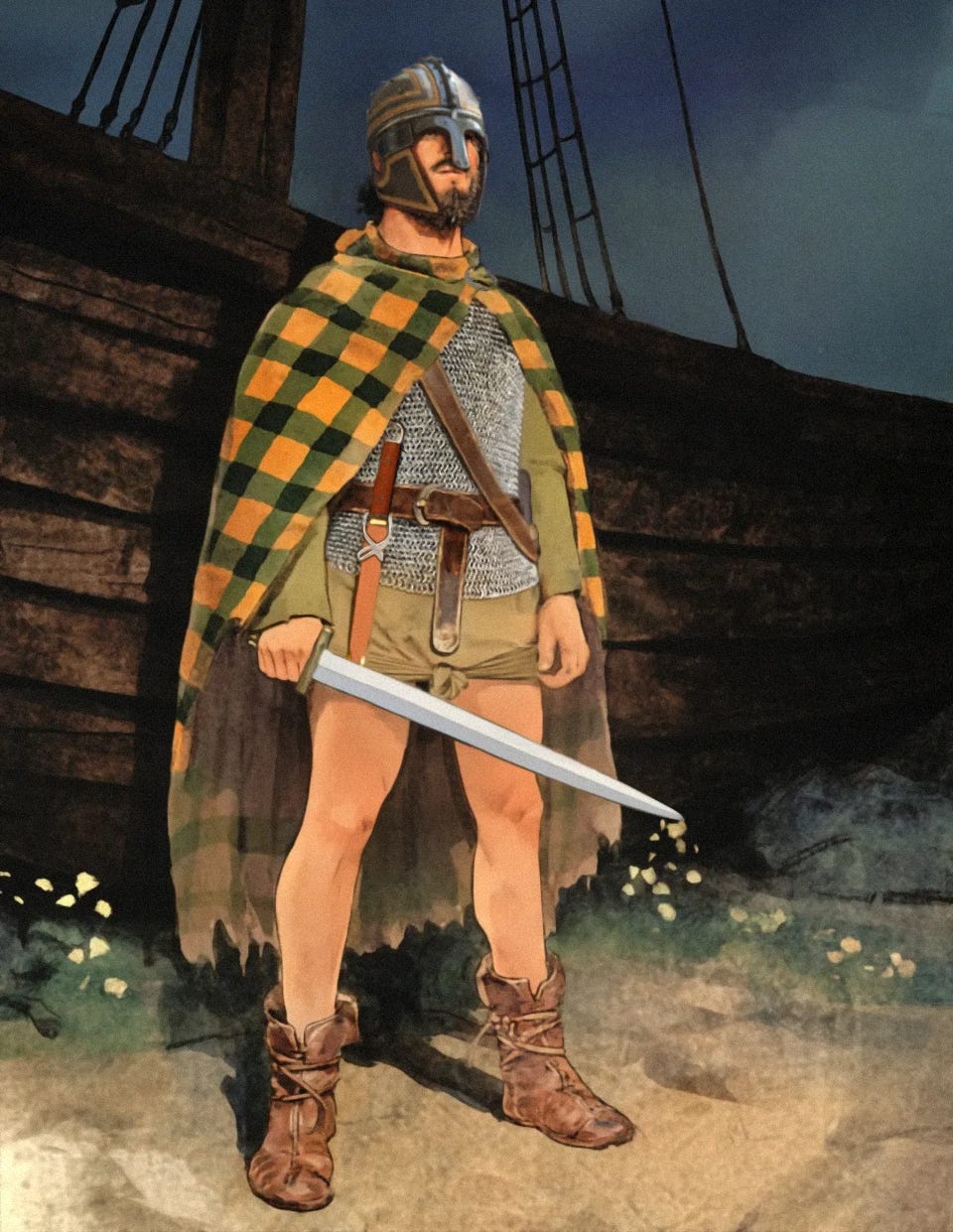
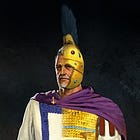

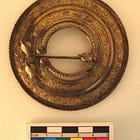

This his phenomenal - and I can't wait for Hengist! Cool choice